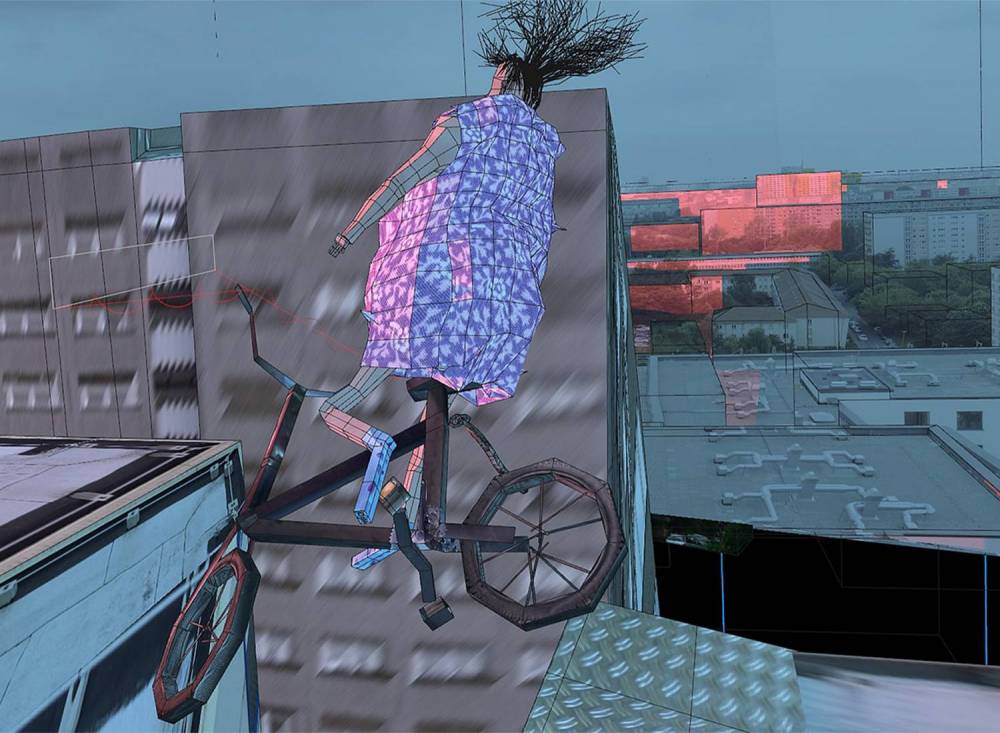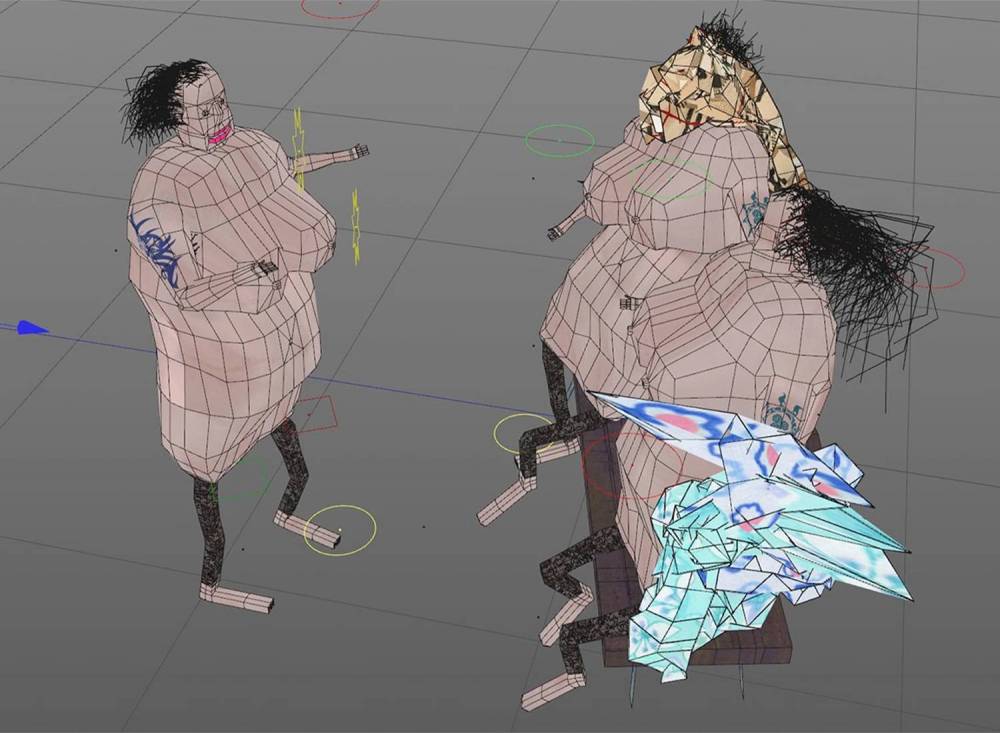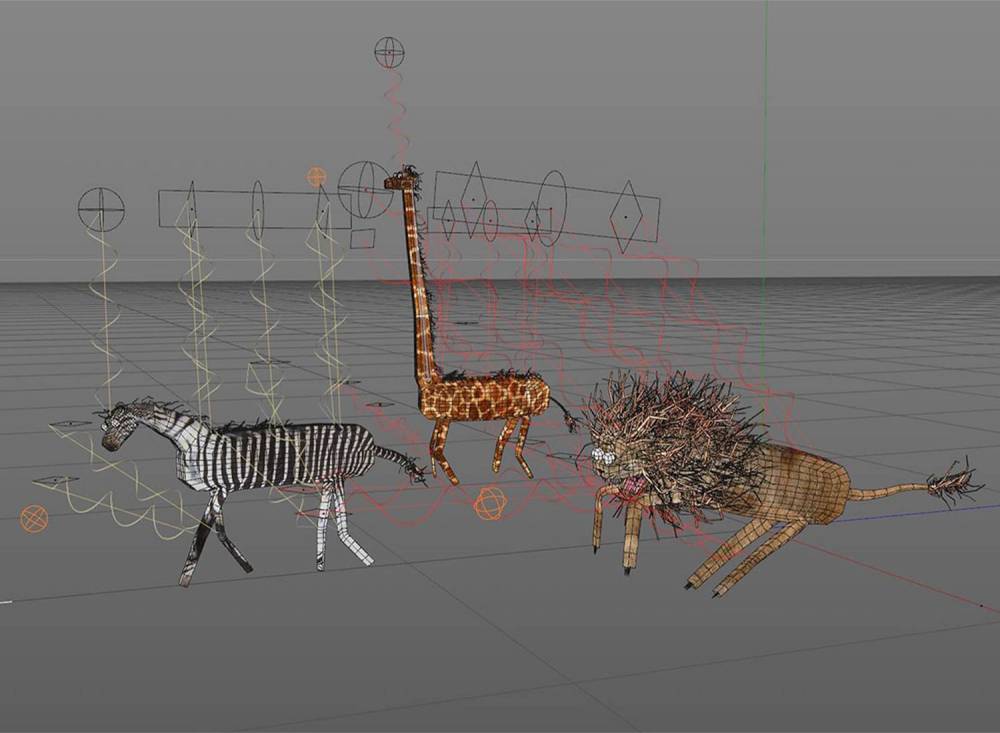With Nikita Diakur it’s all about spontaneity
3D filmmaker Nikita Diakur makes beauty ugly. With his very own characterful style the creative developed ugly filmmaking and has defined a whole new approach to the scene. In our interview with him, we talked about perfectionism, finding an idea and about his creative concept behind Ugly.
In what three words would you describe your aesthetics?
Honest, intuitive, spontaneous.

Can you tell us more about ugly filmmaking?
The name Ugly originally comes from my first short film. It was based on an internet story called “Ugly the Cat”. That’s the origin of the style. It also stands for spontaneous and somewhat less careful work.
Does ugly film making in a way criticize smoothly ironed beauty ideals?
The internet story “Ugly the cat” resonates with social criticism. Ugly is mainly about our perceptions of beauty and ugliness. Of course, it’s very individual. When I started 3D filmmaking, the whole scene was very much going towards perfection. Everything had to look smooth and beautiful. The style back then was lifelike realism or beautifully stylized. Other art forms were much more advanced than the 3D animation scene, so I took a different path.
What is the reason for the perfectionism of the 3D scene?
The 3D scene is dominated by technicians. At least that’s how it was back then. Technicians would rather make everything perfect than getting creative. Now, the programs are accessible to almost everyone and that has changed the whole scene. Anyone can get creative and create 3D animations from home.
Do you see yourself more as a technician or a creative? Where do you see boundaries here?
I think that’s blurred. Of course, those are the two fronts, but you can’t separate that clearly, especially not in 3D animation. I see myself in the middle. I’m not the perfect technician nor the most creative person. I try to move in between. For me, that’s the most exciting approach.

When kicking off a big project, how do you start? Where do you find inspiration?
It can be difficult to find inspiration. I try not to force myself to have that one brilliant idea already at the beginning. If you do so, you might end up thinking about it for ages. The idea doesn’t have to be perfect.
With Ugly, it took almost two years to get going. The problem was that I was looking for the perfect idea. And there is no such thing. It’s much more effective to just start with something and trust the process.
When creating do you have a goal in mind or does that come with the process?
I look at it step by step. The most important thing is that I never lose interest in my work. That’s also the reason why I make my own films and projects. I don’t want it to be boring or predictable and I try to keep that in my work and process.
Creative work is known to be accompanied by a lot of doubting. Are self-doubts necessary in a way to create something amazing?
I think self-doubt is very important. If I make a film and I find mistakes or I’m not completely satisfied, I must take a close look, find the mistake and fix it. For that, you need to be reflective, critical and doubtful.

What tools are essential for your workflow?
I mainly use Cinema 4D. However in the end, it depends on your personal style, workflow and objectives. Cinema 4D is great for working intuitively without overcomplicating things. I have a good flow working in C4D.
What was the core (creative) idea for “Ugly”?
Ugly is a framework project by now and consists of several short films that all take up a similar aesthetic. In general, ugly is my way of working: Spontaneous, authentic and relatable to a degree. I try to have fun with my work, it’s very important.

What’s the creative process behind creating the movie characters?
They were created similar to when drawing with your weak hand or how you see children draw. It’s a strange way of modelling and difficult when you know how things are supposed to look. There is no clear concept, but for example, you can make the right arm fat if the left one is thin etc. It doesn’t really make sense, but that’s how they were done. Everything should be a bit messy, broken and asymmetrical.
What technical challenges had to be mastered for the project?
There are always challenges; I’m always struggling with tech. In my current project, the biggest challenge was that I can’t really code while coding is a big part of it. You’re constantly faced with technical challenges as well as creative ones. But that’s what’s exciting.

Which tools or methods were used to master these challenges?
For every problem, there are multiple solutions. It’s always a process. There is no one method to solve every challenge. You use your mind and the tools you have and stay on the problem until it is resolved.
What inspires you to keep on pushing further?
I don’t need an incentive because I do what I enjoy. That’s where I take the energy from.
Nikita Diakur presented by Maxon is one of our key speakers at Forward Festival Vienna this year. Get your festival or livestream ticket now!